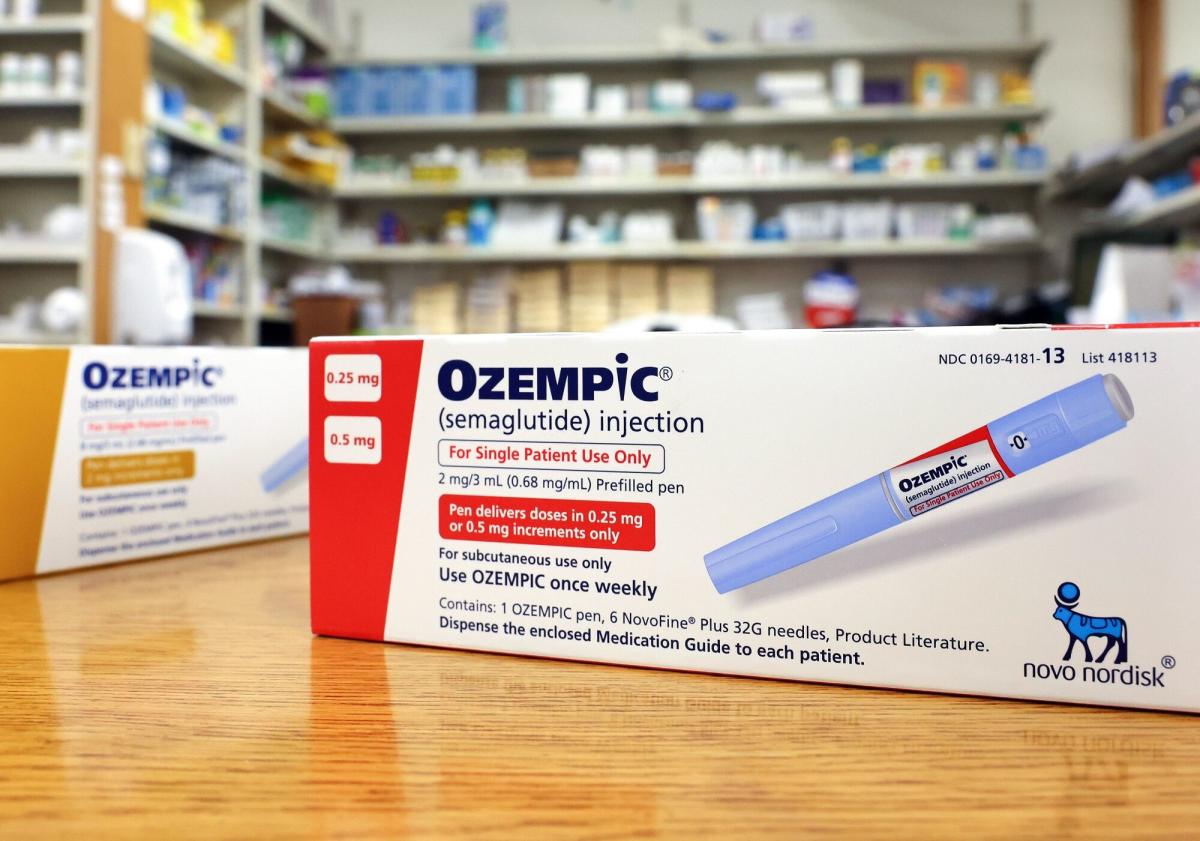The global Ophthalmic Disease Therapeutics Market is projected to reach USD 53.8 billion by 2030, with a CAGR of 6.10% in the forecast period, driven by factors such as the increasing prevalence of ophthalmic diseases and advancements in treatment options.
The global lipid nanoparticles market is projected to reach USD 1,895.1 million by 2029, exhibiting a CAGR of 13.6% from 2022 to 2029, driven by the increasing focus of pharmaceutical and biotechnology companies on drug production.
The rise of diabetes and weight loss drugs like Ozempic is not only impacting pharmaceutical companies, but also retailers, makers of weight loss products, and other industries, with knock-on effects ranging from increased foot traffic in stores and changing consumer behavior to potential disruptions in the diet industry.
The budget for artificial intelligence and machine learning in the healthcare sector is expected to reach 10.5% in 2024, up from 5.5% in 2022, and could have transformational effects on the industry beyond drug discovery, according to Morgan Stanley. Private equity firm Thoma Bravo is also in talks to acquire NextGen Healthcare, while Nestle-partnered weight loss capsules have succeeded in a pivotal trial, boosting shares of Epitomee Medical.
Weight-loss drugs are becoming increasingly popular and are expected to have a significant impact on the pharmaceutical industry.
Eli Lilly could potentially generate $50 billion in annual sales from weight-loss drugs by 2030, positioning the pharmaceutical company as a major beneficiary in the obesity treatment market, according to J.P. Morgan.
The pharmaceutical market is expected to grow significantly by 2030, reaching $3,206 billion, driven by advances in healthcare technologies, increasing healthcare expenditures, and the rise of chronic diseases. The Business Research Company offers comprehensive reports to assist pharmaceutical companies with informed decision-making and staying competitive in this dynamic sector.
The global Clinical Nutrition Products Market is expected to experience significant growth by 2031, with an estimated CAGR that will reach USD million.
The introduction of weight-loss drugs like Wegovy could lead to a healthcare crisis, as the cost and demand for these medications may overwhelm insurers, employers, and government programs that purchase medications in the United States.
The global dietary supplements market is expected to grow by USD 61.4 billion from 2022 to 2027, with a CAGR of 8.16%, driven by increasing adoption of healthy eating habits, although consumer distrust stemming from misleading marketing activities may impede market growth.
Gene therapy companies like Sarepta and BioMarin are developing million-dollar treatments for severe genetic disorders, indicating a potential explosion in the gene therapy market. The global cell and gene therapy market is projected to reach approximately $82.24 billion by 2032.
The demand for diabetes and obesity drugs, such as Ozempic and Wegovy, has increased by 300% in the last two years, with Ozempic accounting for 65% of total prescriptions due to its off-label use for weight loss, but future prescription volumes will depend on supply shortages and other factors.
Drugmakers spent nearly $500 million on advertisements for obesity and diabetes treatments in the U.S. during the first seven months of this year, with Novo Nordisk's Ozempic and Wegovy leading the pack.
Shares of Structure Therapeutics surged more than 30% as their experimental obesity pill demonstrated success in helping participants lose an average of 10 pounds in a small early-stage trial, positioning it to potentially compete in the booming obesity drug market.
The high demand for weight loss drugs like Wegovy and Mounjaro has exceeded the capacity of drugmakers to manufacture them, creating shortages and potential supply strain for treating obesity.
The demand for self-injection weight-loss drugs is rising, prompting contract drug manufacturers to invest billions of dollars in expanding or building factories to fill injection pens, as the obesity market could be worth $100 billion within a decade.
The surging popularity of GLP-1 weight-loss drugs is expected to have significant impacts on the stock market and economy, reshuffling trillions of dollars and leading to changes in various sectors such as healthcare, food, and airlines.
